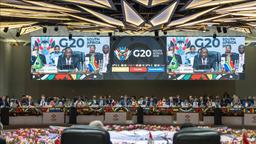
Evaluation Note / Güven Sak
In 2001 Turkey was hit by one of its most significant economic crises. As a founding external member of the newly established Monetary Policy Committee of the Central Bank of Turkey (CBRT) I had a chance to witness the adoption of the stabilization package that was designed at the time by Kemal Derviş, an economist at the World Bank. In the end, the stabilization packaged worked well under the auspices of the IMF thanks to the adoption of its orthodox economic policies.
ORTHODOX POLICIES BRING SUCCESS
Inflation at the outset was at around 80 percent, but by 2005 it had declined to around 8 percent. Then Prime Minister, President Recep Tayyip Erdoğan who came to power in 2002, adopted the IMF-backed economic reform package of the previous government, and famously dropped six zeros from the Turkish lira. Turkey’s economy was finally stabilizing.
What was the secret formula? How did this policy initiative work when so many others had failed?
It always helps to have sound monetary and fiscal policies. Financial stability, together with the political stability that came about with the 2002 election of the AKP and Erdoğan to power, operationalized the 1996 Customs Union arrangement with the EU. Turkey’s subsequent EU candidacy and the reforms required to begin this process led to a rapid structural change in the Turkish economy. Turkey had become the second industrial country in the Middle East, after Israel.
You may read evaluation note from here.





